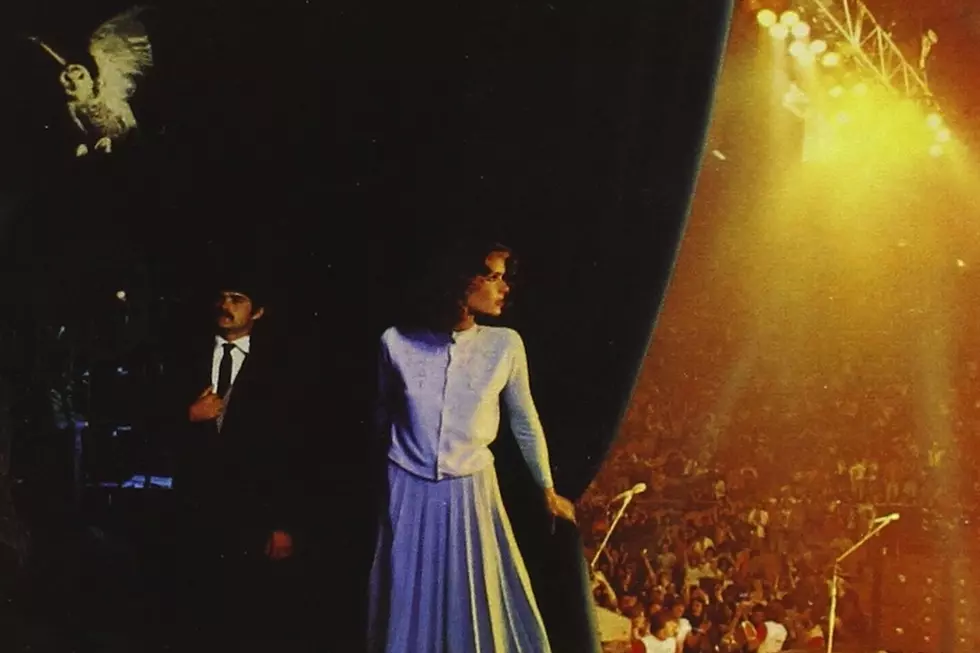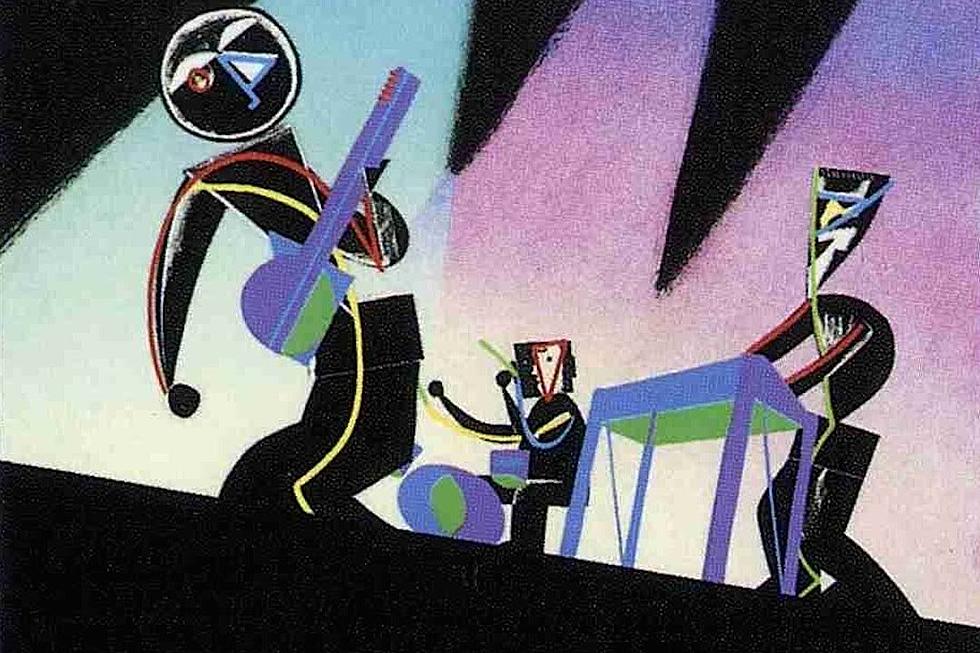
How Rush Looked Back at a Rise to Stardom on ‘Exit … Stage Left’
To many fans, 1981's double live Exit ... Stage Left remains the ultimate in-concert album released during the long and distinguished career of Rush. That stands to reason, since it arrived on the heels of the group's best-selling and arguably definitive studio album, Moving Pictures, which pushed the band into the mainstream upon its February release.
"When Moving Pictures came out, and we went on tour, that's when everything changed," guitarist Alex Lifeson said in Contents Under Pressure. That was really the big turning point." Rush had still been in debt until the unprecedented success enjoyed by radio singles like "Tom Sawyer" and "Limelight," Lifeson revealed. "We were offered to re-sign, renegotiate, redo our deal. That's when a lot of those sorts of worries were dispelled."
From this point forward, Rush would finally be free to focus on their art without undue business hangups. An ensuing tour stretched from February to December 1981, with a three-month summer break. Lifeson, vocalist/bassist Geddy Lee and drummer/lyricist Neil Peart paired recordings from those dates with others from 1980 to celebrate the eight studio albums that had preceded and incrementally contributed to their newfound financial prosperity.
Live versions of many songs from their first four records – 1974 debut, 1975's Fly by Night and Caress of Steel, and 1976's breakthrough 2112 – were already featured on 1976's All The World's a Stage. Except for early fan-favorites "A Passage to Bangkok" and "Beneath, Between & Behind," Exit ... Stage Left would focus on the next four LPs: 1977's A Farewell to Kings, 1978's Hemispheres, 1980's Permanent Waves and, finally, Moving Pictures.
The results effectively documented Rush's transition from technically-driven progressive rock ensemble to hit-making art-rockers, while somehow allowing both dimensions to coexist peacefully.
Listen to 'Spirit of Radio' From 'Exit ... Stage Left'
Rush's economical takes on "The Spirit of Radio" and "Red Barchetta" shared side one with an expanded "YYZ," as the instrumental now housed Peart's drum solo. On side two, those two older tunes and a sparkling "Closer to the Heart" indulged the eight-minute dramatics of "Jacob's Ladder."
Side three featured the trippy but nippy "The Trees," prefaced by a brief acoustic Lifeson intro titled "Broon's Bane" that dedicated to long suffering producer Terry Brown, and the 12-minute adventure of "Xanadu." Side four followed the once again studio-faithful renditions of "Freewill" and "Tom Sawyer" with the challenging instrumental epic, "La Villa Strangiato."
Unveiled on Oct. 29, 1981, just in time for the holiday season, Exit ... Stage Left shot to No. 10 on the Billboard album chart, slowly making its way to platinum sales thereafter. Still, not everyone was entirely satisfied with the album's sound in the long run – namely Geddy Lee, who regretted the band's perfectionism in the mixing stage.
"That one was an attempt to kind of exaggerate how perfect you could make a live album," Lee said in Contents Under Pressure. "There was a lot of meddling with the tapes and trying to make sure we had the best performances. We also made a conscious effort to pull down the audience a bit and emphasize the music. In the end, I think we recorded a fairly sterile live record."
Those criticisms aside, this masterful compendium of top on-stage performances also included imaginative cover art that provided an engrossing "Where's Waldo"-like exercise in identifying key art from previous albums. (The young lady from Permanent Waves was there, and the owl from Fly by Night, among other images.) Then there was the album title itself. Exit ... Stage Left was a quote from the Hanna-Barbera cartoon character Snagglepuss, and revealed Rush's underrated sense of humor to all those who just assumed the trio took themselves too seriously.
The Most Awesome Live Album From Every Rock Legend
You Think You Know Rush?
More From Ultimate Classic Rock









